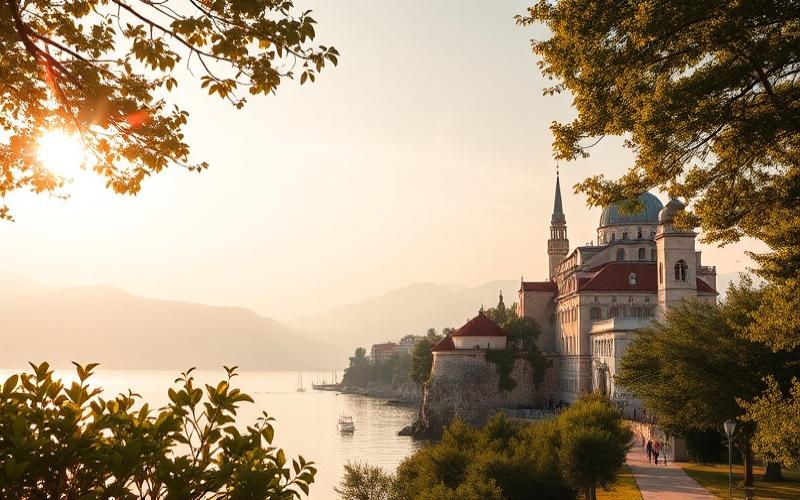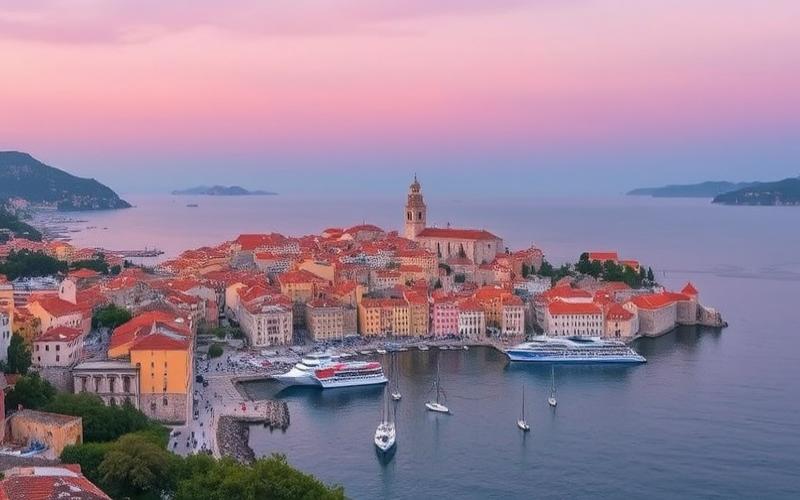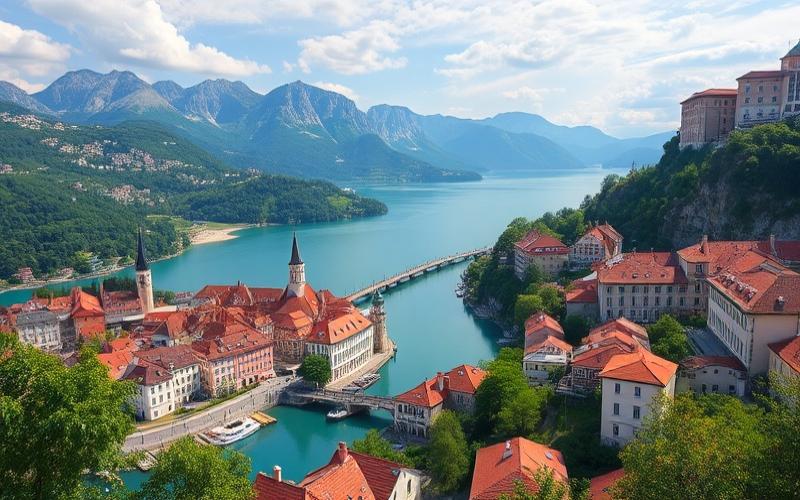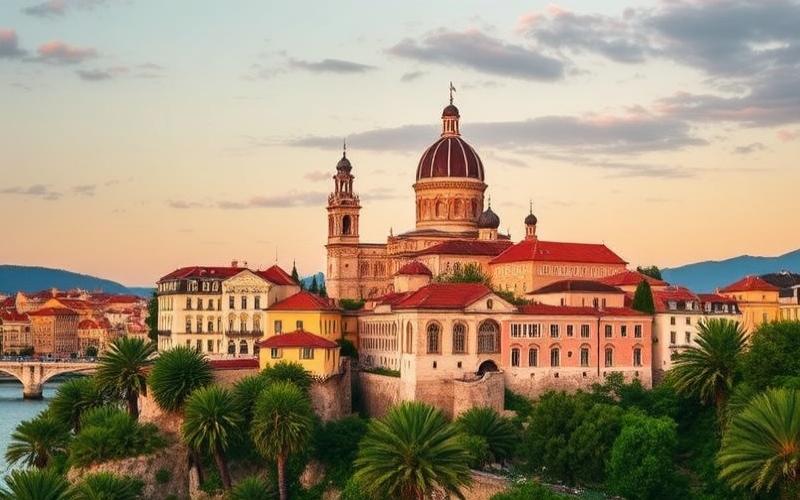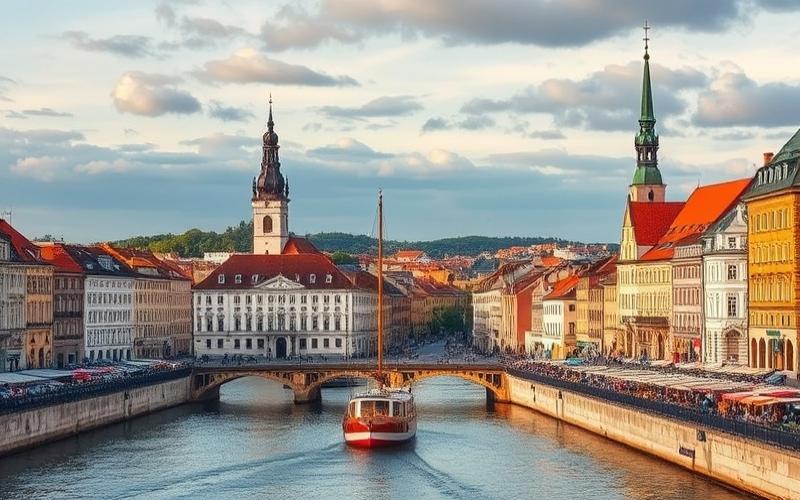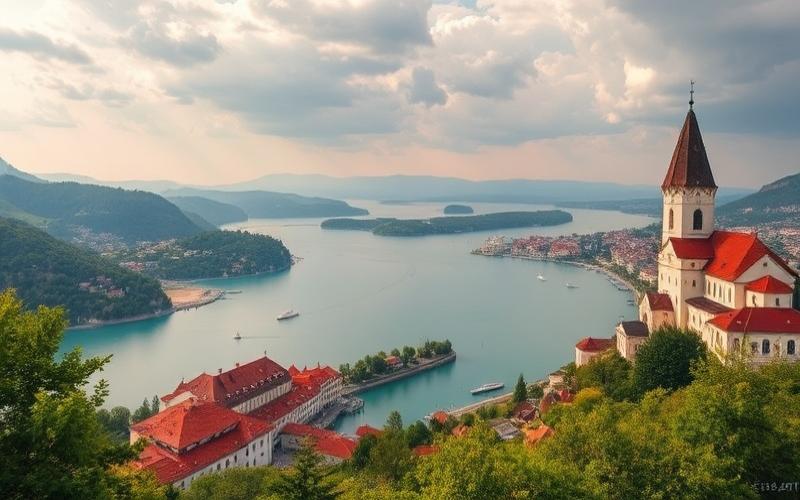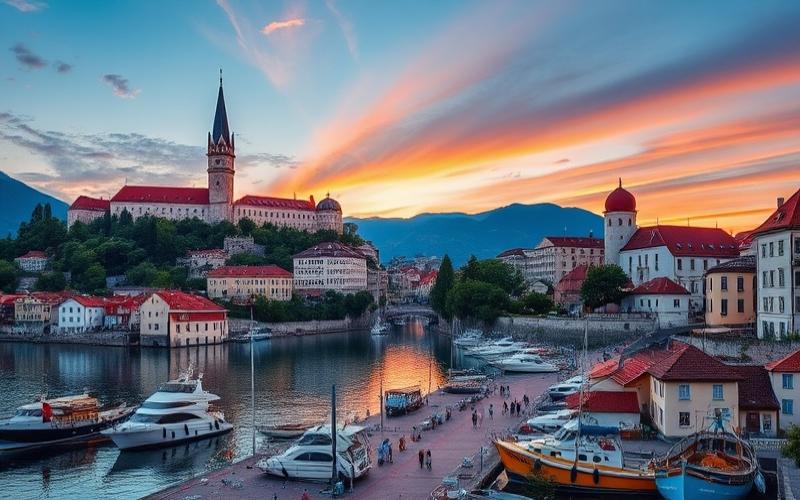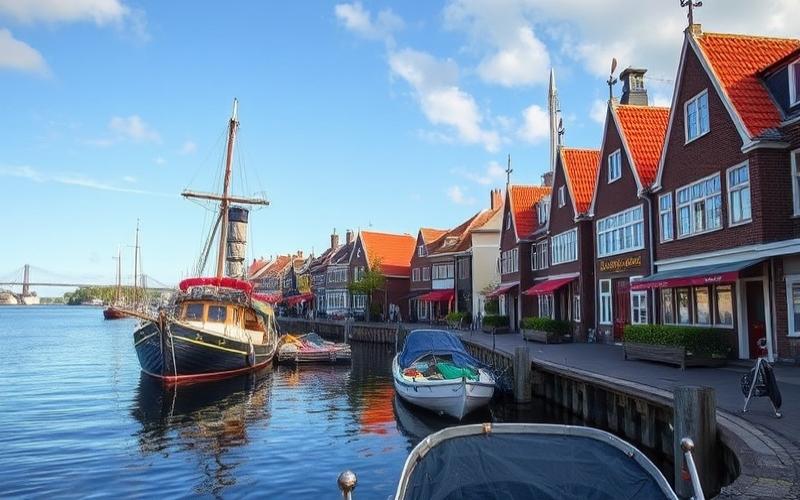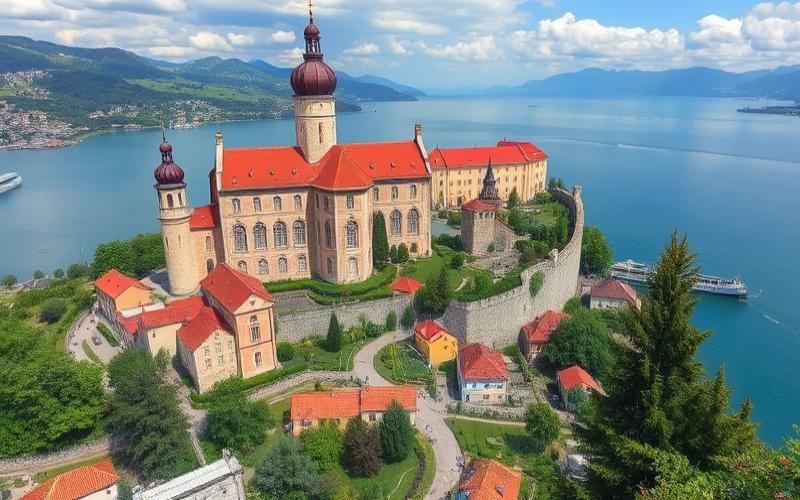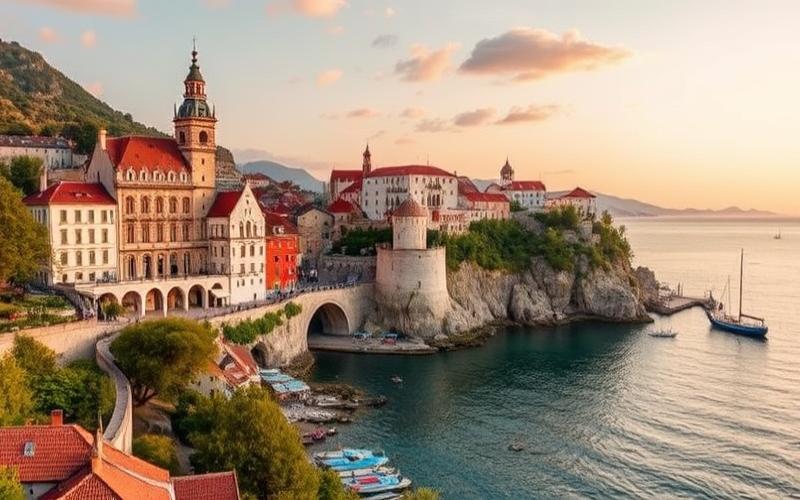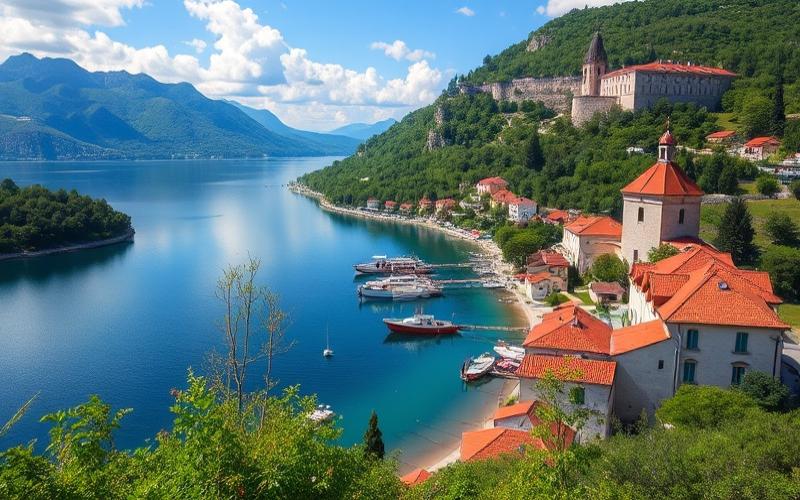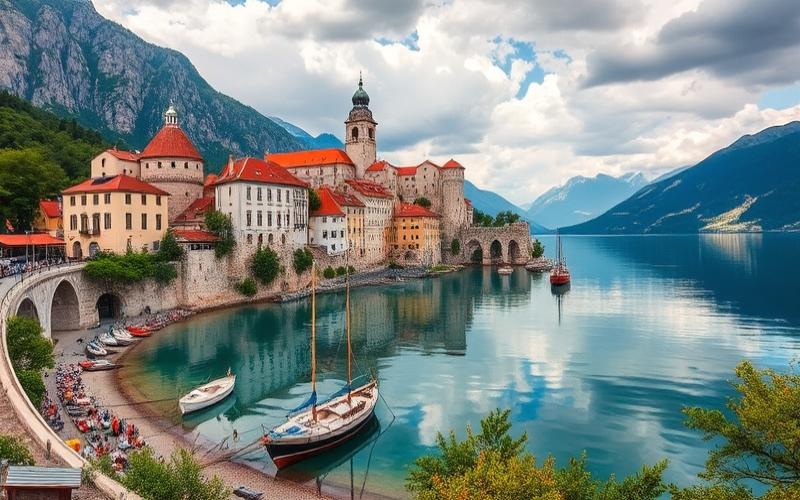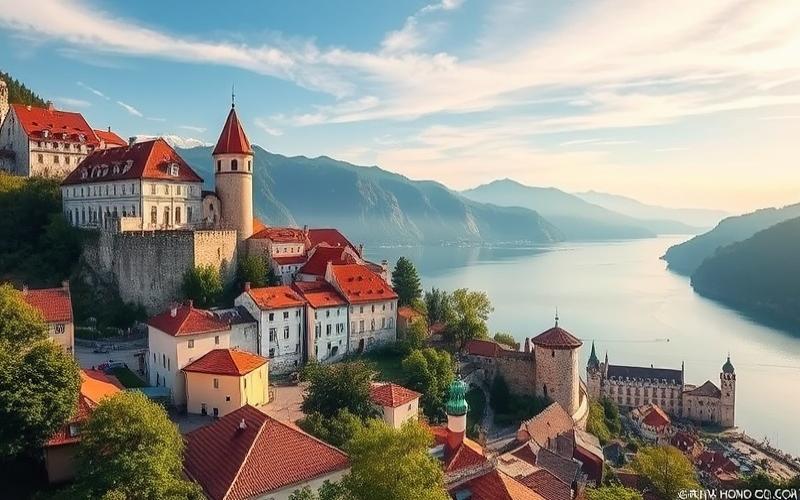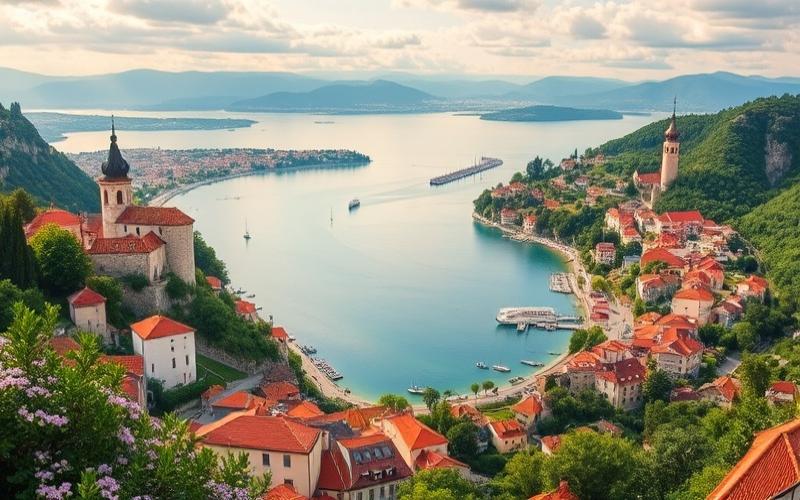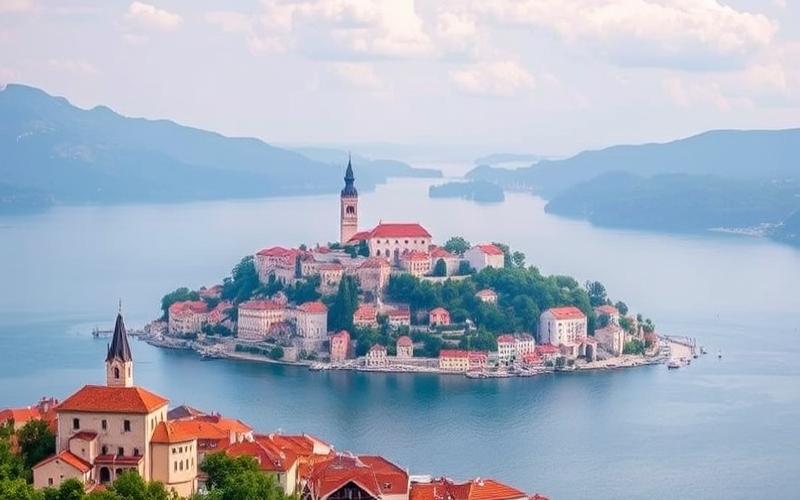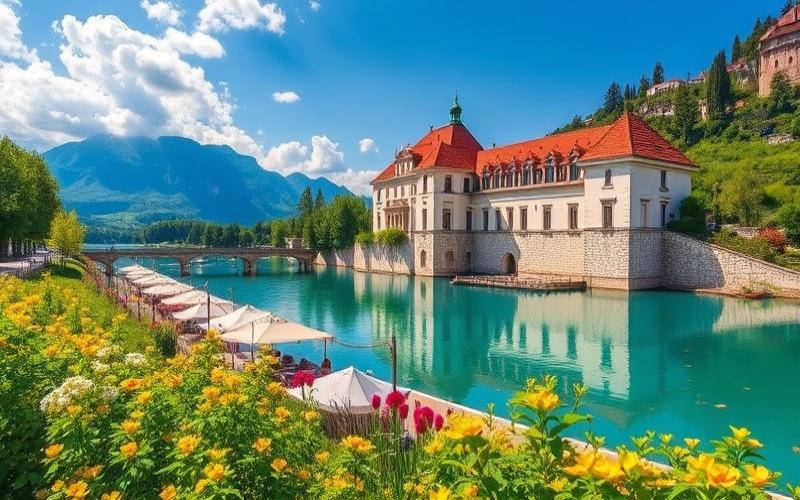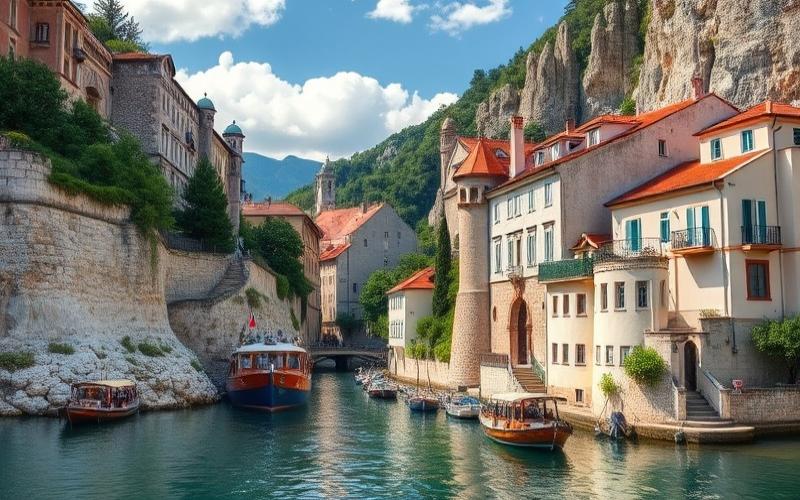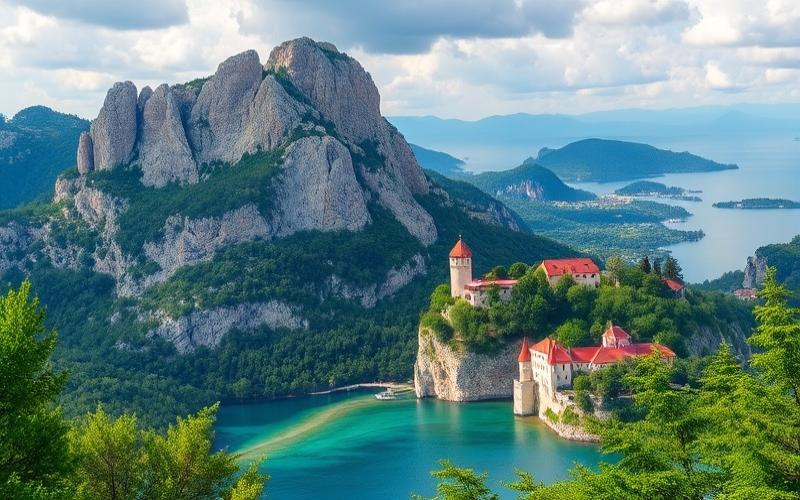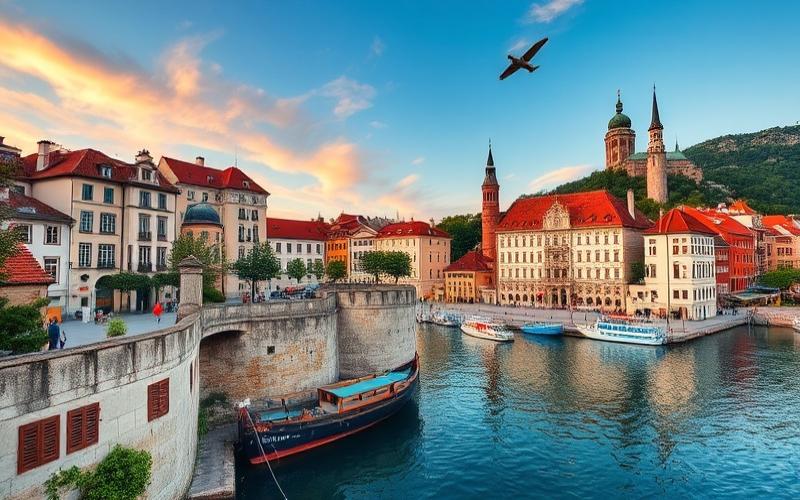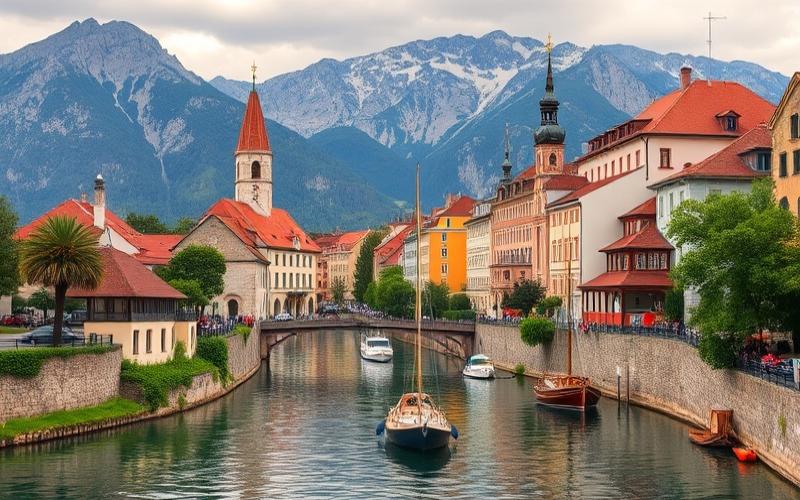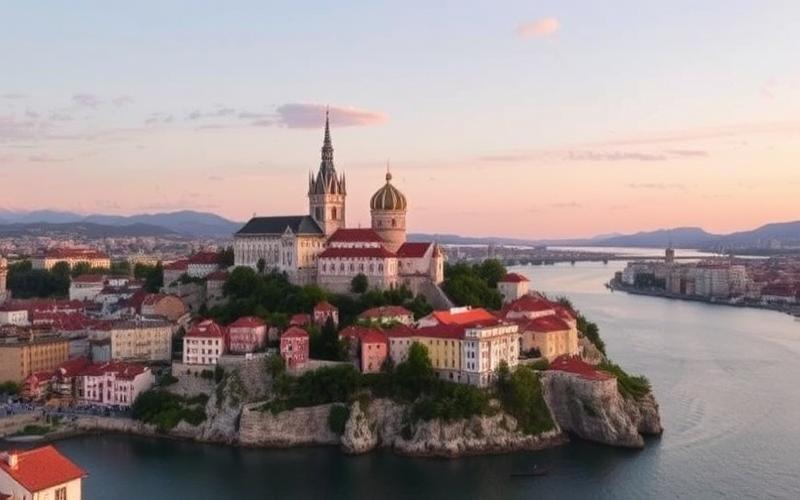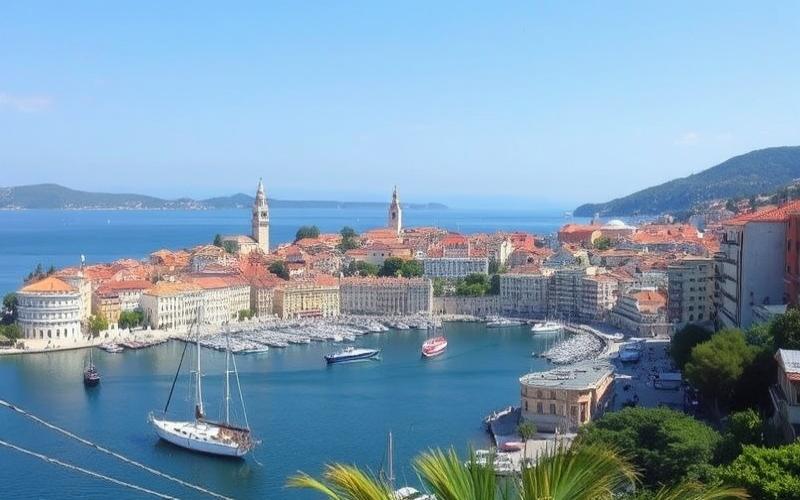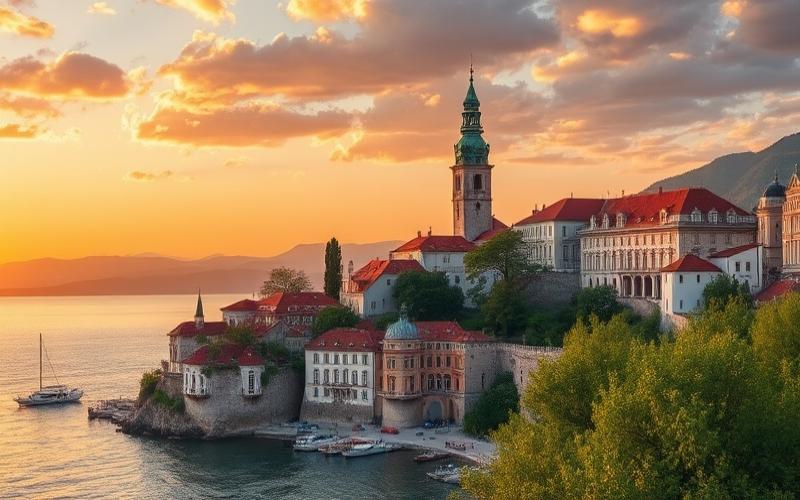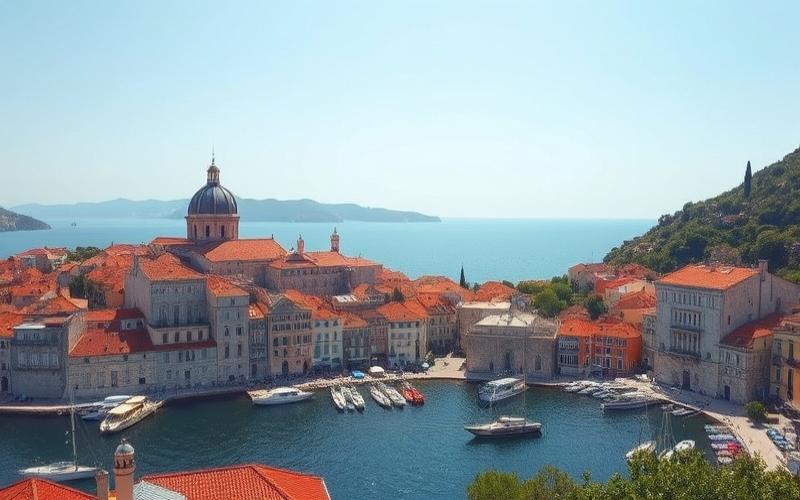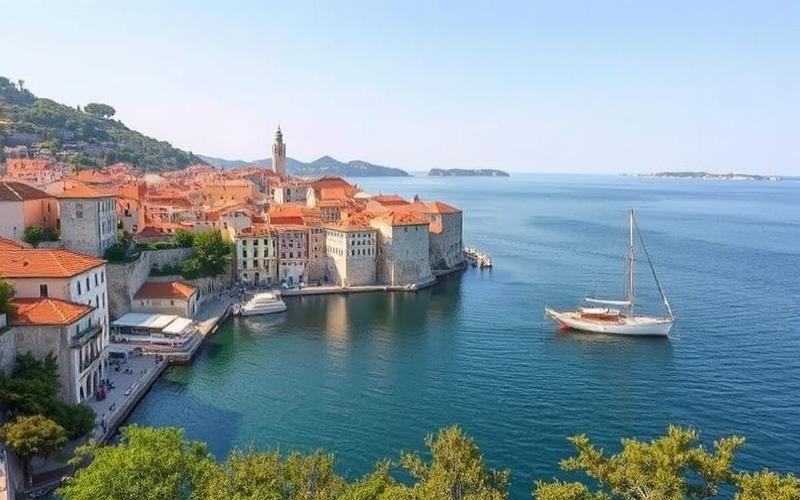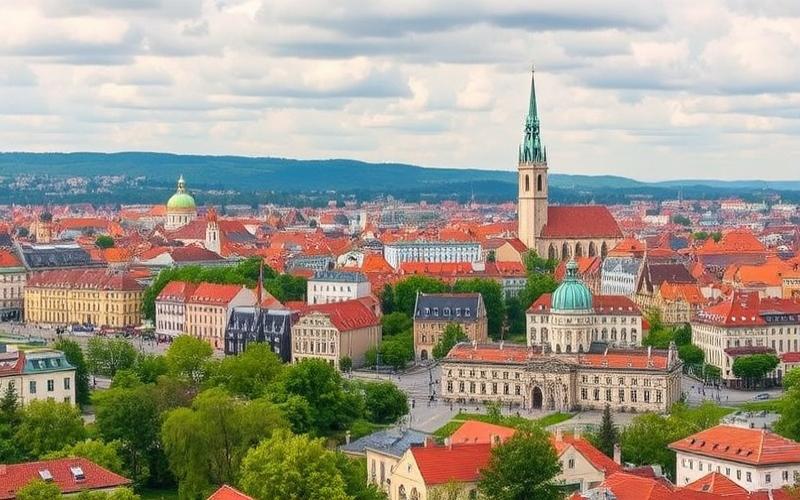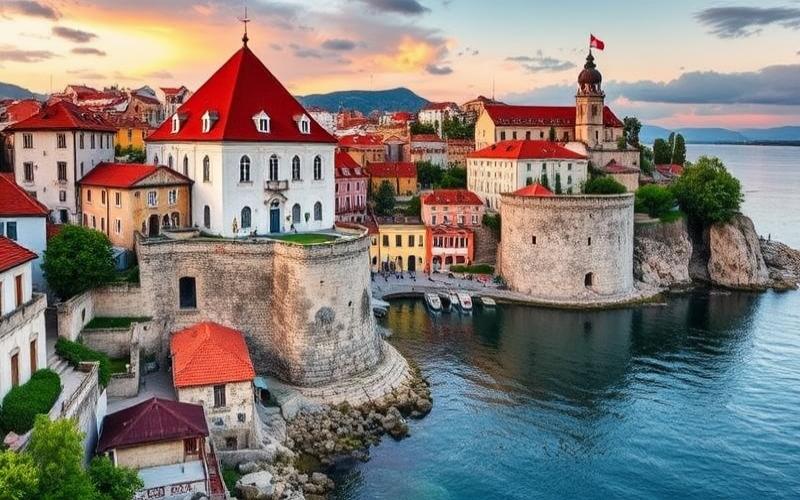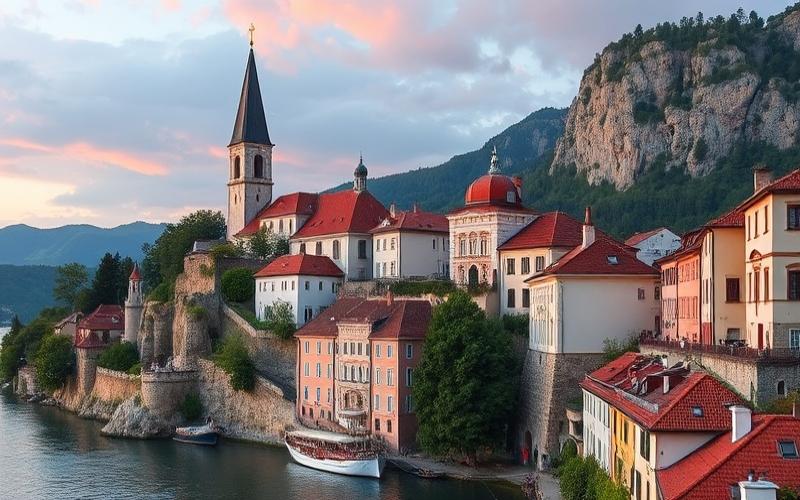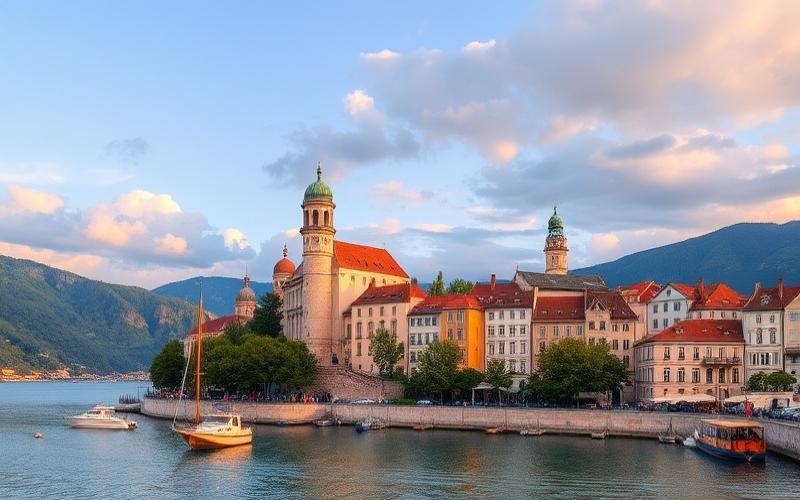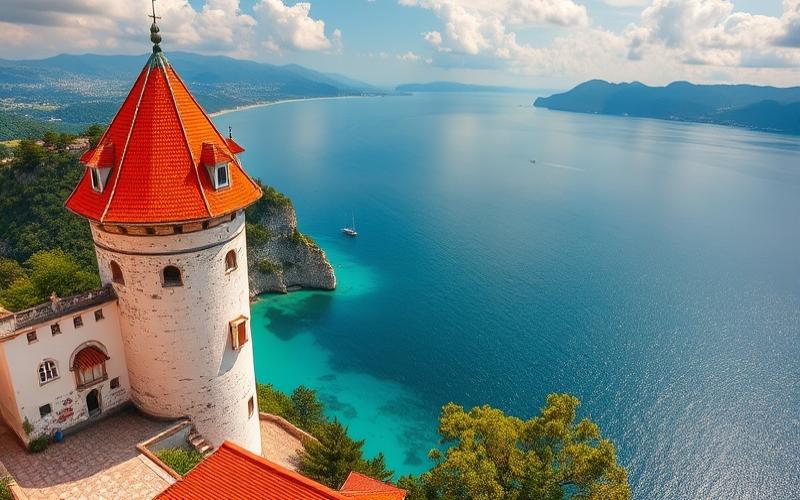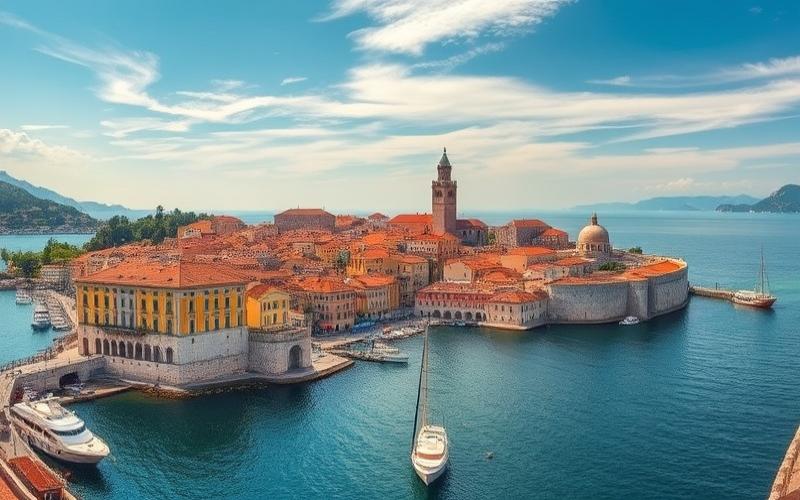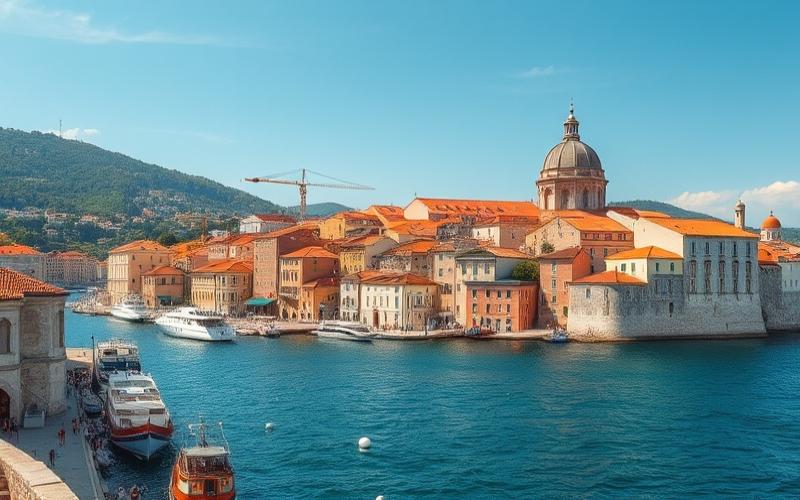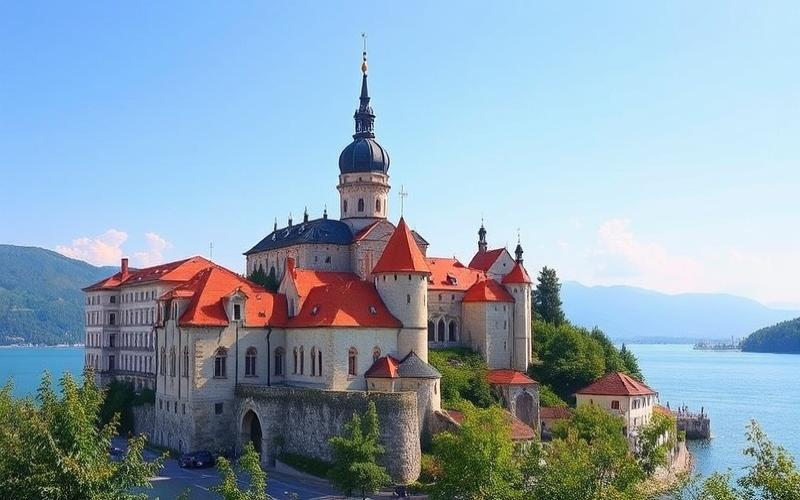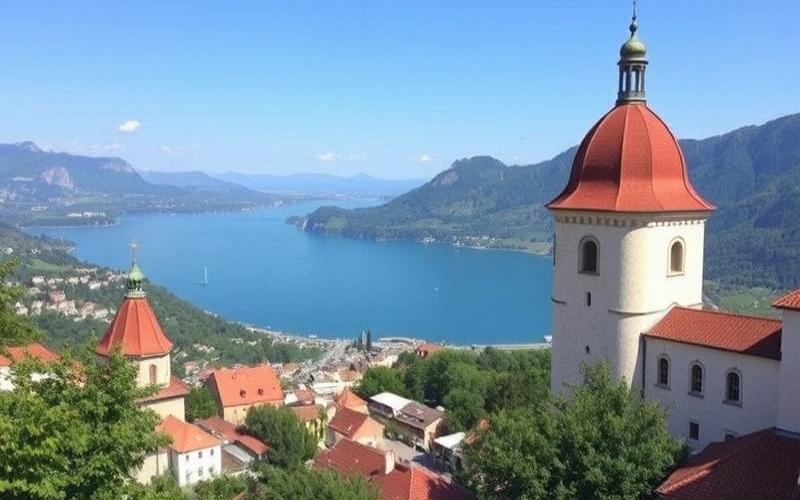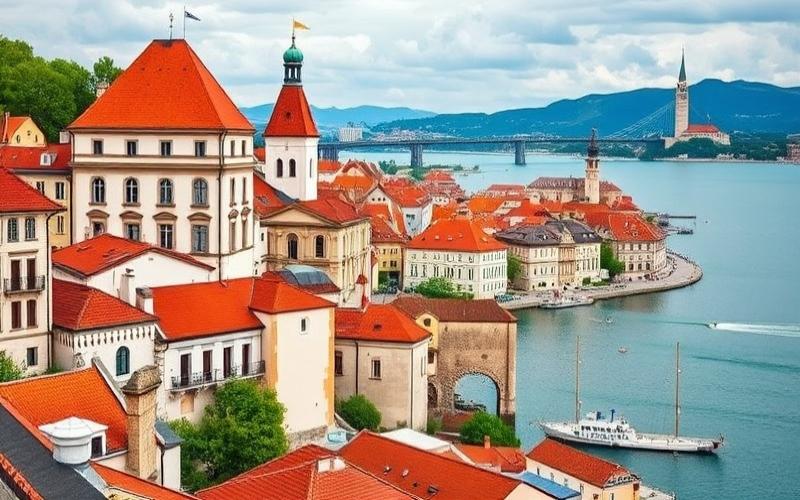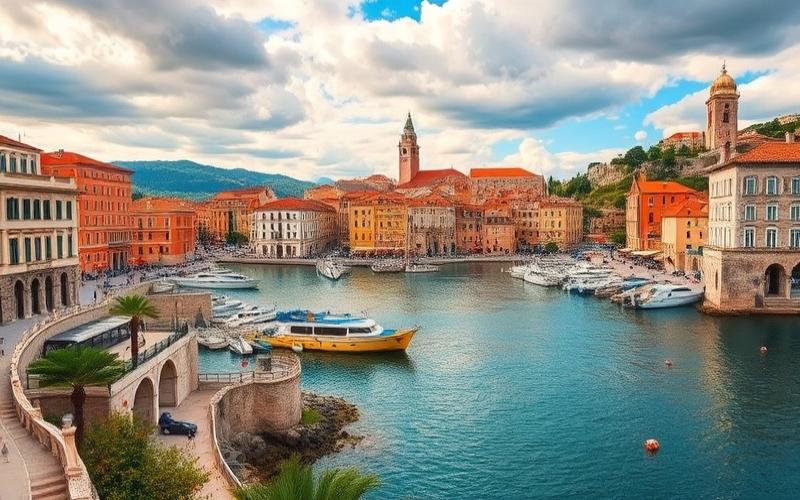
 Published on and written by Cyril Jarnias
Published on and written by Cyril Jarnias
Croatian Cities Where Real Estate Prices Will Soar by 2030
As Croatia continues to establish itself as a sought-after tourist destination, some of its appealing cities are seeing real estate prices skyrocket, attracting both investors and new residents.
This article examines the key Croatian cities where prices are expected to peak by 2030. With a mix of picturesque beaches, historical sites, and thriving economic opportunities, these locations offer insight into future real estate market trends in Southern Europe.
Discover how the tourism boom, combined with strategic investments, propels these cities toward unprecedented development, shaping a promising yet potentially expensive future.
Promising Cities for Real Estate in Croatia
Recent Economic and Demographic Trends in Croatia Influencing Real Estate
- Stable Economic Growth: Croatia has benefited from steady growth, low inflation rates, and the switch to the euro in early 2023, boosting foreign investor confidence and facilitating real estate financing.
- Increased Tourist Appeal: The country has become one of Europe’s most popular destinations, with a massive influx of tourists strongly driving demand for seasonal rentals and residential properties.
- Growing Urban Population: Zagreb attracts more young professionals and families for its economic opportunities; Split appeals with its port dynamism; Dubrovnik remains a global tourist hub.
Promising Cities for Real Estate Investment (2025-2030)
| City | Key Assets | Recent Investments | Recent Real Estate Price Increase | 2030 Outlook |
|---|---|---|---|---|
| Zagreb | Economic capital, universities, startups | Urban infrastructure (transportation), new neighborhoods | +14% YoY (2023) | Moderate but steady growth expected |
| Split | International port, tourism growth | Port development, luxury hotels | Strong increase since 2022 | High potential due to rental demand |
| Dubrovnik | UNESCO heritage, premium tourism | Massive heritage renovations | Among the highest prices in the country | Stable growth under land pressure |
Recent Statistics on Price Evolution
- The national average annual increase reached 13% in Q1 2025, compared to 10% at the end of 2024.
- Zagreb shows similar or higher growth in some sought-after neighborhoods.
- On the Adriatic coast (Split/Dubrovnik), limited supply creates intense competition among international buyers.
Credible Forecasts for the Coming Decade
Experts anticipate a continued moderate upward trend until 2030 in major cities and coastal resorts. Projections are supported by:
- Strengthened European integration,
- Post-euro monetary stability,
- Constant supply pressure due to natural or heritage restrictions,
- Ongoing expansion of the tourism sector.
Favorable Local Government Policies
List of key measures:
- Incentive programs for energy renovations in historic centers;
- Targeted tax relief for certain tourist rental investments;
- Easier access to mortgage credit after the euro introduction;
- Public/private partnerships to develop urban and coastal infrastructure.
These policies are expected to continue supporting the market while partially protecting against excessive speculative bubbles through increased regulatory oversight.
Sector Outlook & Testimonials
“Net rental profitability often exceeds that seen in many other comparable European markets,” according to several international real estate agents.
Local testimony:
“We’ve seen our income increase every year since we started renting to tourists via Airbnb” reports a Split property owner.
German investors also cite “Croatian legal security as superior to that observed elsewhere in the Mediterranean.”
Comparison with Other European Markets:
| Criterion | Croatia | Spain/Portugal |
|---|---|---|
| Annual price increase | ~13% | ~7–9% |
| Rental profitability | High in tourist areas | Moderate |
| Administrative barriers | Low post-euro | Variable |
| Average price per m² in major cities | ~€2,500–4,000 | ~€4,000–6,000 |
Key takeaway: The Croatian market still combines relative land/housing cost accessibility with higher growth potential than other Mediterranean destinations.
Outlook until 2030 remains decidedly optimistic for Zagreb, Split, or Dubrovnik—provided the European macroeconomic context remains favorable.
Good to know:
Croatian cities like Dubrovnik, Zagreb, and Split are becoming true real estate hotspots, attracting massive investments in tourism and infrastructure. According to recent statistics, real estate prices in Dubrovnik increased by 7% last year, while Zagreb saw a 5% rise. These cities also benefit from favorable government policies, such as tax reductions for real estate investments, further stimulating the market. Increased tourism and a thriving tech scene in Zagreb are also boosting real estate demand. By 2030, experts predict continued growth, comparable to other booming European markets like Portugal or Hungary. Local investors already report attractive returns, reinforcing the idea that these Croatian cities will remain competitive.
Long-Term Investment: Opportunities in Croatia
Major Croatian cities like Dubrovnik, Split, Zagreb, and Rijeka show dynamic economic prospects and a growing real estate market thanks to several structural factors.
| City/Region | Average Price €/m² (2025) | Annual Growth 2024-2025 | Regional Specificities |
| Dubrovnik | >3,500 (Southern region) | ~+7% | Premium tourism, UNESCO heritage |
| Split-Dalmatia | 3,490 | — | Strong tourism-driven demand |
| Zagreb | 3,071 | — | Capital, institutional stability |
| Rijeka (Kvarner) | 3,500 | +12% | Country’s strongest growth |
The national average price reaches a historic level of €3,655/m² (+9.33% year-over-year).
Key Factors Contributing to Real Estate Price Increases by 2030:
Infrastructure Development:
- Port modernization in Rijeka
- Improvement of highway and rail networks between major cities
- Massive investments via European funds (€26 billion for 2021–2027)
Tourism Boom:
- Accounts for nearly 20% of GDP
- Dubrovnik and Split attract premium international clientele
- Continuous increase in tourist numbers post-pandemic
Government Initiatives and Favorable Economic Context:
- Entry into the eurozone since January 2023 facilitating foreign investments
- Incentive policies to attract international investors, although a planned increase in property taxes may curb some speculative purchases short-term
Major Economic Trends by Sector for Long-Term Investors:
List of attractive sectors:
- Residential & Rental Real Estate: Growing demand fueled by urban/summer tourism.
- Tourism & Hospitality: Development of high-end offerings in historic centers.
- Logistics & Transportation: Port modernization around Rijeka – regional maritime hub.
- Financial Services: Growth driven by European integration and banking digitalization.
- Green Technologies & Renewable Energy: Increased public support to meet European standards.
| Sector | Share of GDP (%) |
| Public Services | 27.1 |
| Manufacturing | 14.5 |
| Trade | 12.4 |
| Transport/Communication | 11.0 |
| Hospitality/Restaurants | 6.4 |
| Real Estate | 9.0 |
Economic Projections Until 2030
- Annual growth is expected to remain above the EU average (+2.9–3.6% anticipated between 2025–2030).
- The real estate market should continue its upward trend under the combined effect of sustained foreign demand, limited supply in coastal historic centers, and easier credit access thanks to the eurozone.
Croatian metropolitan areas thus benefit from robust fundamentals favorable to long-term real estate or sectoral investments – primarily driven by high-end international tourism, infrastructure dynamism funded by Europe, and post-eurozone macroeconomic stability.
Main Risks/Uncertainties:
- Potential slowdown if significant European monetary tightening occurs.
- Possible unfavorable evolution due to overtourism or too rapid increase in land costs/local taxes.
Good to know:
Long-term investment in Croatia, particularly in dynamic cities like Dubrovnik, Split, Zagreb, and Rijeka, presents promising opportunities, supported by imminent economic growth. By 2030, the tourism boom, coupled with significant infrastructure improvements, especially in transportation and technology sectors, is expected to drive a notable increase in real estate prices. The Croatian government is also implementing various initiatives to attract foreign investors while developing special economic zones, enhancing the appeal of these cities. The housing market sees ambitious construction projects flourishing to meet growing demand, ensuring promising returns on investment. Tourism, hospitality, and emerging technology sectors stand out as true economic drivers, making these cities particularly attractive for investors ready to commit long-term.
Growth Areas Until 2030 in Croatia
Main Regions with High Growth Potential by 2030
| Region | Driving Factors | Demographic Outlook | Real Estate Outlook | Key/Emerging Cities |
|---|---|---|---|---|
| Zagreb | Modern infrastructure, tech hubs, public and private investments, national development policies | Moderate population growth, talent influx, urbanization | Sustained price increases, strong residential and commercial demand | Zagreb |
| Adriatic (Split, Dubrovnik, Zadar) | International tourism, hotel investments, port and transport modernization, green initiatives | Appeal for expatriates and growing seasonal population | Rapid price increases, land scarcity, high rental valuation | Split, Zadar, Dubrovnik, Šibenik |
| Northern Croatia (Varaždin, Čakovec) | Industrial development, proximity to EU, logistics, education | Demographic stability, internal migration | Gradual increase, appeal for families and SMEs | Varaždin, Čakovec |
| Pannonian Croatia (Osijek, Vukovar) | European funds, smart agriculture, post-crisis recovery, transport infrastructure | Demographic challenge (decline, aging), but stabilization expected via investments | Low prices, catch-up potential, appeal for investors | Osijek, Vukovar |
Key Factors of Regional Expansion
- European Investments: €9.6 billion for regional cohesion and €4.7 billion for agriculture until 2030, targeting infrastructure, innovation, energy efficiency, and reconstruction.
- Green and Digital Transition: National strategy aiming for convergence with European averages in digital economy and ecological transition, stimulating qualified employment and territorial appeal.
- Tourism: Continuous growth, particularly on the Adriatic coast, with a GDP share between 10 and 15%. The sector stimulates real estate demand, hospitality, and services.
- Government Initiatives: Balanced regional development, training programs, support for startups and SMEs, policies to attract talent and curb youth emigration.
Real Estate Market Trends
- Zagreb: Strong price increases, dynamic residential and office markets, development of new neighborhoods and mixed projects. Demand exceeds supply, especially for modern and eco-friendly properties.
- Split and Adriatic Coast: Record prices in tourist areas, shortage of quality housing, strong seasonal rental demand. Secondary cities (Zadar, Šibenik) show the strongest growth.
- Inland Regions (Osijek, Slavonia): Still accessible prices, medium-term appreciation potential due to structural investments and infrastructure improvements.
- Emerging Areas: Varaždin, Čakovec, Rijeka (port), and some municipalities near major axes benefit from capital influx and new residential or industrial projects.
Demographic and Economic Projections Toward 2030
- Economic Growth: Acceleration expected thanks to European funds, green and digital transition, and tourist appeal. GDP per capita should approach the EU average.
- Demographics: Persistent challenges of aging and decline in eastern and central parts of the country, but stabilization or slight increase expected in major cities and coastal regions due to internal and international migration.
- Labor Market: Increased need for qualified workforce, policies for integrating youth and expatriates, development of continuous training.
In Summary
Zagreb and the Adriatic coast areas (Split, Zadar, Dubrovnik) will concentrate most economic and demographic growth by 2030, driven by innovation, tourism, infrastructure, and foreign investment. Inland regions benefit from catch-up potential thanks to European funds and modernization, offering medium-term real estate opportunities.
Factors to Monitor
- Evolution of migration and employment policies
- Real estate market adaptation to international demand
- Impact of new transport infrastructure (roads, ports, digital)
- Absorption capacity of European funds and effectiveness of structural reforms
Good to know:
In Croatia, several regions show significant growth potential by 2030, with Zagreb and Split leading the list due to their developed infrastructure, increasing tourist influx, and foreign investments. Zagreb, with its ambitious urban projects, and Split, enhanced by its coastal appeal and government initiatives to boost tourism, are predicted to see their real estate markets soar. Additionally, emerging cities like Zadar and Rijeka benefit from infrastructure improvements and a growing presence of technologically advanced companies, strengthening their economic appeal. These areas are also expected to experience demographic growth, leading to rising real estate prices, supported by recent analyses indicating sustained economic development. For investors, these regions offer attractive return opportunities, backed by positive projections and a favorable economic atmosphere.
Disclaimer: The information provided on this website is for informational purposes only and does not constitute financial, legal, or professional advice. We encourage you to consult qualified experts before making any investment, real estate, or expatriation decisions. Although we strive to maintain up-to-date and accurate information, we do not guarantee the completeness, accuracy, or timeliness of the proposed content. As investment and expatriation involve risks, we disclaim any liability for potential losses or damages arising from the use of this site. Your use of this site confirms your acceptance of these terms and your understanding of the associated risks.

